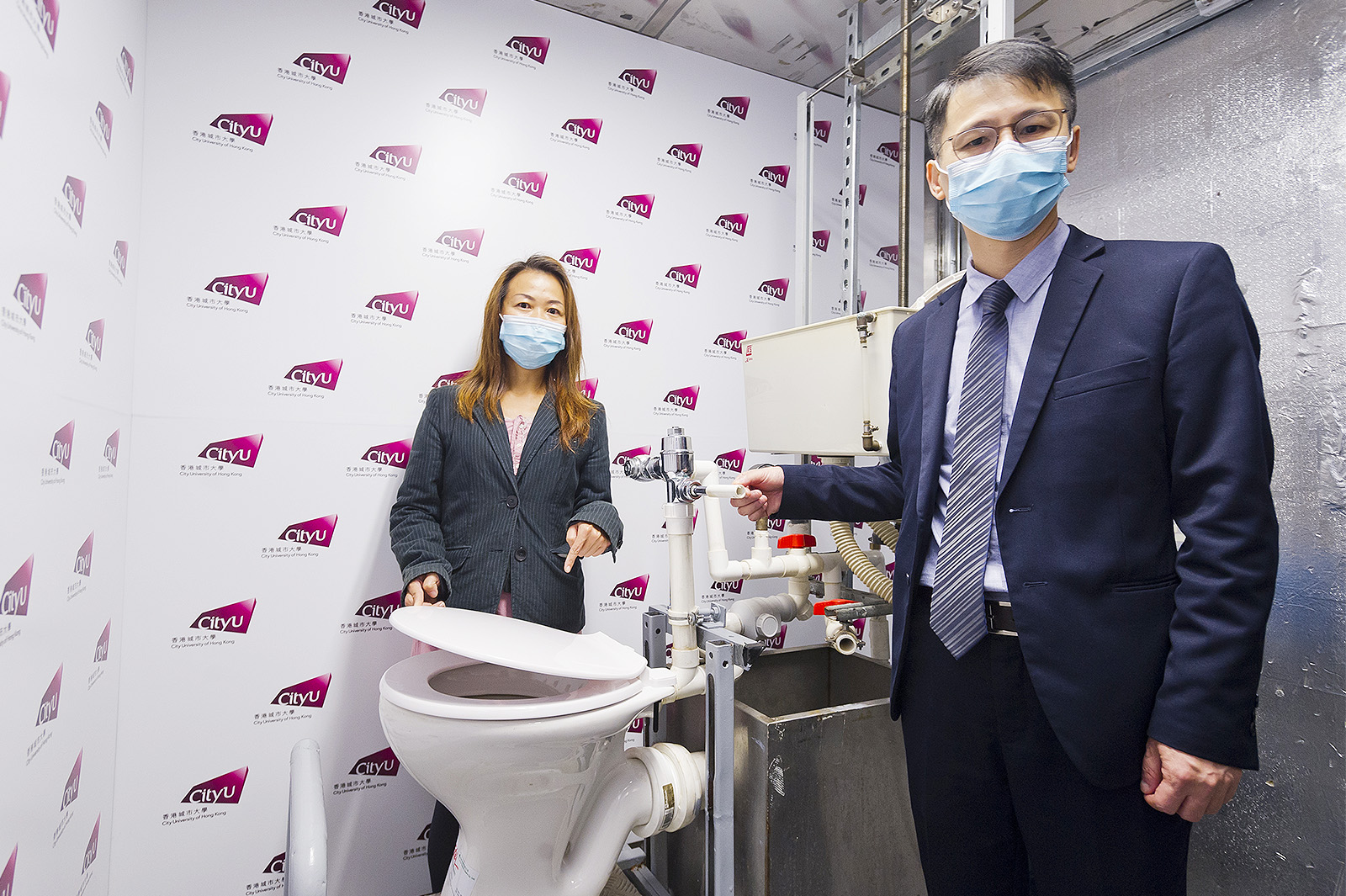

Toilets must be kept clean to prevent the transmission of bacteria and pathogens during the outbreak of the novel coronavirus epidemic. According to a study revealed by Professor Alvin Lai Chi-keung, Associate Head of the Department of Architecture and Civil Engineering in the College of Engineering at City University of Hong Kong (CityU), and his research team, toilet users’ health can be affected by pathogens embedded in airborne aerosol droplets that may rise as high as one metre from the toilet seat during flushing and spread in the air.
Professor Lai and his team have studied the relationship between airborne aerosol droplets and the transmission of pathogens for several years.
They have found that each toilet flush can produce approximately 14,000 to 80,000 aerosol droplets, which can rise higher if the water tank is installed on a high position or a valve type flushing system is used. The droplets may rise as high as one metre.
Their study revealed that pathogens can be spread in the air by aerosol droplets emitted from toilet flushing, thus contaminating the washroom. Also, the smaller the size of the pathogens, the higher the concentration of distribution in the air after flushing.
Covering the toilet lid before flushing can help to reduce bacteria-embedded airborne aerosol droplets that may contaminate the air and the washroom. However, Professor Lai said international studies found that bacteria can still be emitted from toilet flushing as there is a space of a few millimetres between the lid and the toilet bowl.
Multiple flushing may not help eliminate this problem since pathogens can stay on the surface of the toilet bowl for some time and be transmitted with aerosol droplets. The surrounding area will thus be infected when pathogens are spread in the air. As a result, the toilet lid, wash basin and even the floor of the washroom will be contaminated.
Professor Lai and Dr Iris Li Wai-sum, a member of the research team and a specialist in infectious disease, would like to remind the public that covering the toilet lid before flushing cannot completely prevent pathogens from spreading. They suggested using 1 in 49 diluted household bleach to regularly the clean toilet bowl and 1 in 99 diluted household bleach to clean all areas of the washroom. They also advised the public to use the exhaust fan, if available, for 15 to 30 minutes after using the washroom to help dilute the bacteria and virus in the air. An opened window will also maintain adequate indoor ventilation.
Dr Eric Lee Wai-ming, Associate Professor from CityU’s Department of Architecture and Civil Engineering, provided supplementary information on the relationship between sewage systems and hygiene conditions in indoor habitats at the CityU press conference.






